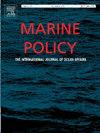Use or non-use? A deep dive into the amenity and ecological benefits of the Great Barrier Reef
IF 3.7
2区 社会学
Q2 ENVIRONMENTAL STUDIES
引用次数: 0
Abstract
Valuing nature often involves reconciling the antagonism between ecological and amenity benefits of environmental assets. Amenity benefits, such as those derived from recreation and tourism, sometimes conflict with the ecological benefits people assign to nature conservation, which are typically assessed as non-use values. While the Total Economic Value (TEV) framework is commonly applied to aggregate values from different groups of users and non-users, it remains unclear whether this approach adequately captures the interplay between use and non-use dimensions, how these patterns vary across population samples, and what drives differences in these values. This study explores these questions through an experiment evaluating Queensland populations’ preferences for both ecological and amenity improvements in the Great Barrier Reef (GBR), the largest reef system globally. A discrete choice experiment assesses preferences for expanding coral and seagrass ecosystems against developing recreational and tourism facilities. The sample contains 923 respondents, selected from both Brisbane (distant urban area) and from local areas along the GBR. We find that respondents are primarily supportive of environmental policies expanding coral and seagrass cover. Respondents also support further recreation and tourism opportunities. However, providing further recreational opportunities tend to be perceived more negatively by local GBR users (i.e. visited the GBR previously). For distant users, moral duty and insurance (non-use option) drivers significantly increase preferences for the proposed policy scenarios. Conversely, direct use and option use drivers do not appear to be significant influences when tested as TEV components. This underscores non-use motives as primary influences in valuing complex environmental assets.
使用还是不使用?深入了解大堡礁的舒适和生态效益
评估自然价值往往涉及调和环境资产的生态效益和美化效益之间的对立关系。康乐和旅游带来的美化效益,有时会与人们赋予自然保育的生态效益相冲突,后者通常被评估为非使用价值。虽然总经济价值(TEV)框架通常应用于来自不同用户和非用户群体的汇总价值,但尚不清楚这种方法是否充分捕捉到使用和非使用维度之间的相互作用,这些模式如何在人口样本中变化,以及是什么驱动了这些价值的差异。本研究通过一项实验来探讨这些问题,该实验评估了昆士兰人口对大堡礁(GBR)生态和舒适改善的偏好,大堡礁是全球最大的珊瑚礁系统。一项离散选择实验评估了扩大珊瑚和海草生态系统与发展娱乐和旅游设施的偏好。样本包含923名受访者,从布里斯班(遥远的城市地区)和GBR沿线的当地地区选择。我们发现,受访者主要支持扩大珊瑚和海草覆盖的环境政策。受访者还支持进一步发展娱乐和旅游。然而,提供更多的娱乐机会往往会被当地的GBR使用者(即以前访问过GBR)认为是负面的。对于远程用户,道德责任和保险(非使用选项)驱动因素显著增加了对拟议政策方案的偏好。相反,当作为TEV组件进行测试时,直接使用和选择使用驱动程序似乎没有显著影响。这强调了不使用动机是评估复杂环境资产的主要影响因素。
本文章由计算机程序翻译,如有差异,请以英文原文为准。
求助全文
约1分钟内获得全文
求助全文
来源期刊

Marine Policy
Multiple-
CiteScore
7.60
自引率
13.20%
发文量
428
期刊介绍:
Marine Policy is the leading journal of ocean policy studies. It offers researchers, analysts and policy makers a unique combination of analyses in the principal social science disciplines relevant to the formulation of marine policy. Major articles are contributed by specialists in marine affairs, including marine economists and marine resource managers, political scientists, marine scientists, international lawyers, geographers and anthropologists. Drawing on their expertise and research, the journal covers: international, regional and national marine policies; institutional arrangements for the management and regulation of marine activities, including fisheries and shipping; conflict resolution; marine pollution and environment; conservation and use of marine resources. Regular features of Marine Policy include research reports, conference reports and reports on current developments to keep readers up-to-date with the latest developments and research in ocean affairs.
 求助内容:
求助内容: 应助结果提醒方式:
应助结果提醒方式:


